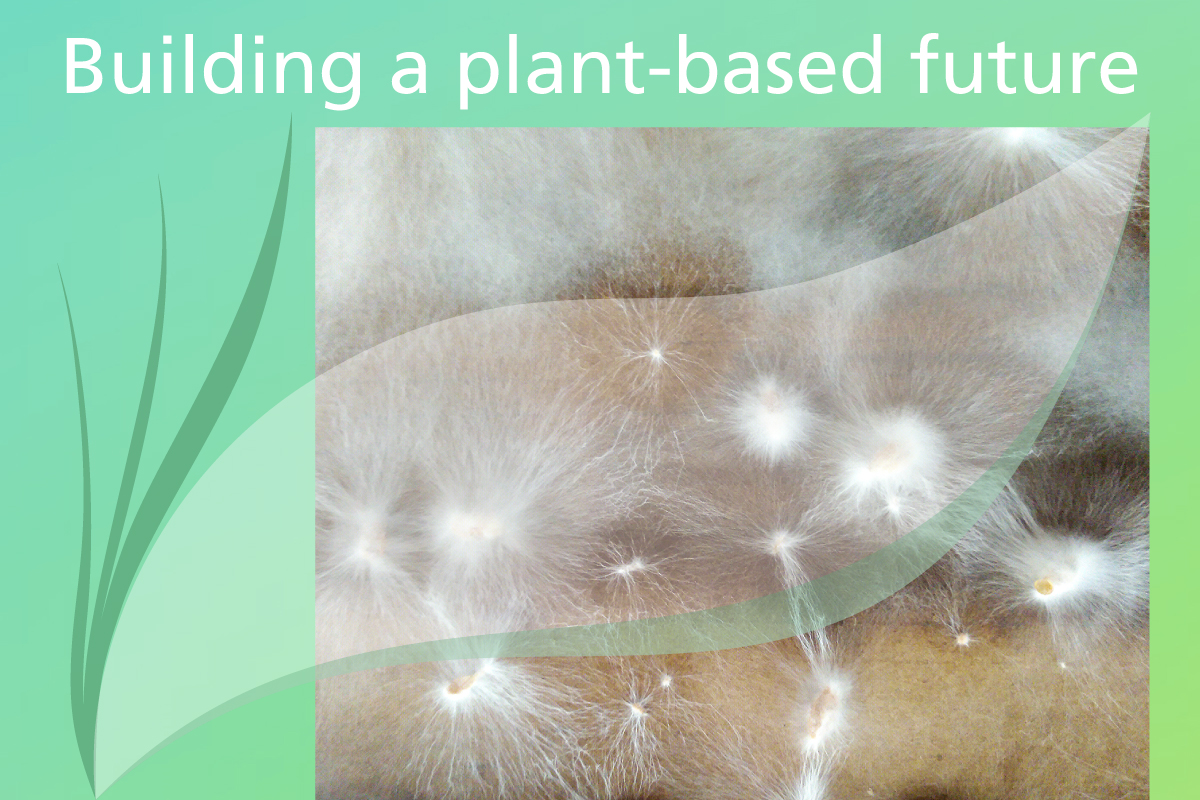Nature’s networkers: Mycelium research at the Fraunhofer WKI
Fall is the peak season for mushroom fans, as the moister conditions and falling temperatures are ideal for promoting the growth of fungi. However, when Dr. Henrik-Alexander Christ and Dr. Steffen Sydow from the Fraunhofer WKI set out in search of fungi, they are not only interested in the fruiting body: For the researchers, the thread-like network of hyphae, the so-called mycelium, is particularly exciting. It is found under the soil and its abilities can be exploited for the production of various materials. The two researchers are investigating the potential of mycelium-based materials for use in, for example, the construction industry.


“The variety and biodiversity within the realm of fungi is enormous: There are around 6 species of fungi per plant species in any one area. However, to date, only around ten percent of all fungal species in the world have been discovered and described. Not only are many species of fungi still unknown, but also many of the ways in which the mycelium functions. As a chemist and materials researcher with additional training in the field of mycology, I am fascinated by the diverse application possibilities for mycelium in materials. We have the opportunity here to develop ecologically harmless and recyclable materials and achieve something really good,” explained Dr. Henrik-Alexander Christ, a scientist at the Fraunhofer WKI.
There are fungi that can decompose almost all organic materials, such as plant fibers or wood particles. Mycelium refers to the entirety of the thread-like cells of a fungus. During the decomposition of organic materials, the mycelium forms a three-dimensional network, which results in a self-supporting structure. Within the metabolic process, substrates such as sawdust are drawn through the mycelium. A soft, sponge-like and purely organic composite material is thereby created, which can be formed into any desired shape. “The mycelium has the function of a biologically grown adhesive, so to speak,” summarized Dr. Christ.
At the Fraunhofer WKI, researchers are demonstrating the potential of building with mycelium. “Through the application of organic substrates such as fibers from elephant grass, we are able to utilize residual materials in order to produce a 100 percent bio-based, degradable, renewable and low-energy construction material. With the help of various processes, the desired properties and performance characteristics of the construction material, such as texture, strength, elasticity and fiber orientation, can be controlled and specifically created,” explained Dr. Steffen Sydow, a scientist at the Fraunhofer WKI.
In collaboration with local cooperation partners from Braunschweig, the researchers have already been able to produce sustainable thermal-insulation materials for buildings. A stage set for the Braunschweig State Theatre has also been created using elephant-grass fibers infused with mycelium. Furthermore, the researchers have produced lampshades for the lights on the stage of the theater, reported Dr. Sydow: “With the lampshades, we were able to demonstrate the expertise of the Fraunhofer WKI in yet another way. The mushroom-shaped shades are comprised of partially hot-pressed mycelium material. Numerous other potential application possibilities exist for hot-pressed mycelium materials, on which we would very much like to conduct further research.”
In nature, fungal mycelia form networks. Trees and fungi enter into symbioses – and the researchers at the Fraunhofer WKI also cooperate in networks. A special kind of cooperation is currently developing between art and science in the “LuminousNetworks” project, funded by the Fraunhofer Network “Science, Art and Design”. “With the ‘LuminousNetworks’ project, we want to introduce the fascinating possibilities of mycelium-based materials to a wider public. The visual artist Malte Taffner uses our technological expertise in order to create sculptures from scrap wood and living mycelium – colorful, iridescent and with a natural protective shield. In his artistic exploration, Malte links technological innovations with current issues relating to diversity and protection as a survival strategy for nature and social communities,” reported Dr. Christ.
Last modified:
 Fraunhofer Institute for Wood Research
Fraunhofer Institute for Wood Research